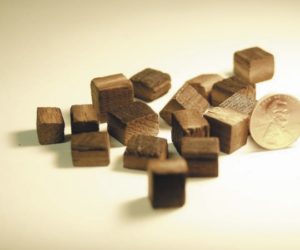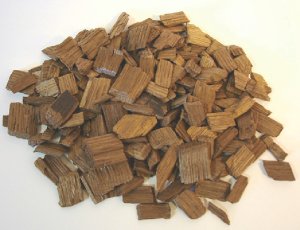When you can’t put your wine in oak, you can always put oak in your wine. Get advice from two experts about how they choose and use barrel alternatives.
Ken Kwa is the Owner of Barrel Char Wood Products in 2018

For the home winemaker, there are many factors to consider when choosing a barrel alternative, such as flavor, time, convenience of use, ability to sanitize, and reuse potential. Most oak barrel alternatives have been engineered for large-scale production of wine. The rules for large-scale production don’t always translate directly to the home winemaker, but the smaller the size of the individual pieces, the earlier in the winemaking process they are typically used in commercial operations. Powder or fine chips are typically used in the early part of the process, with the larger pieces used for longer-term aging. With small-batch production, the primary difference is the amount of time it takes for the flavor to infuse.
The smaller the pieces, the less likely that you will get more than one use out of them. Powder, fine chips, and small cubes are meant to be a single-use product, while the home user might get 2–3 uses out of larger blocks or planks.
We have tried to strike a balance between people who want to home age their wine and people who want to try putting in wood during their fermentation stage. We have found that the small pieces do a good job in both scenarios with small batches but are big enough so as not to become labor-intensive to remove. The hobby winemaker can tailor their aging time based on the flavor profile they want with small pieces; and while they may make a lesser impact than fine particles or chips during fermentation, it still does have a positive impact if used in primary. If used for longer-term aging, the pieces we use will be suitable for multi-week/month aging.
When considering the toast level, keep in mind that lighter toast levels will emphasize the fruit while darker toasts will emphasize vanilla and tannins. The darker the toast, the stronger the tannins will be.
We suggest products that are small block-sized and up be sanitized with boiling water. That way, they can be used in primary without introducing any possible foreign microbes. If only using a portion of a bag, any unused wood can be left without concern in a sealed bag, though we do suggest use within 1-2 years.
Aging in a barrel is typically done over long periods of 12 months or more. During this time the wine takes on slight levels of oxygen through micro-oxygenation, which will shift flavors from fruity/floral to nutty/dried fruit. This is difficult for a home winemaker to replicate without a barrel, but it can be done by different methods depending on batch size. But it’s also important to note that using barrel alternatives has some advantages over barrels in the ability to adjust the amount of time the wine is in contact with the wood by removing the wood while keeping the wine in the container. It’s impossible to stop wine from interacting with a barrel unless you remove the wine from the barrel. Alternatives also allow the home winemaker to add different wood types or different toasts to the same wine. I may suggest chestnut in a wine where tannins are important since it has a high tannin content, or, in small amounts, cherry can give pleasant aromatics to wines.
Desi Hall is a sales associate with The Barrel Mill in Avon, Minnesota.

When choosing a barrel alternative for wine, my first thoughts go to consistency and repeatability. While the cubes, spirals and staves can all be consistent, I prefer spirals because of the surface area and shape of them. The shape/cut of the alternative can add different levels of complexity to the overall flavor and mouthfeel of the wines they are used in. The extraction rates between a cross-grain cut and a cut along the grain can be very different, and the thickness of the material also plays a role. These different rates of penetration and extraction can help add more complex flavors to the wine. Try all the alternatives and see which works best with your process, and don’t be afraid to try something new.
When choosing an origin and toast level, I like to get my alternatives to mimic the barrel that would have traditionally been used for the wine style I am aging. So, using the light toast in white wines will allow the fruit’s flavor to shine and not have a negative impact on color. The dark toast levels have notes of chocolate and stone fruit, which are often ideal for red wines.
If the package is uncompromised, there is no need to sanitize these products. If you are only using a portion of the package, I recommend storing the unused portion in a vacuum-sealed package or an air-tight jar. If that is not an option, you can store them in the original package but plan on putting them through a low-temperature sterilization in your oven before you use them.
Once added, I tend to find that four weeks on alternatives provides optimal flavor impact, however I usually taste the wine every 2–3 days to make sure I’m not over-oaking it.
While oak alternatives won’t give you everything a barrel does, some winemakers are experimenting with introducing forced micro-oxygenation and evaporation through using semi-open fermentation vessels. While this is not the same as a barrel, there have been great advances in using this technique to create award-winning wines.






